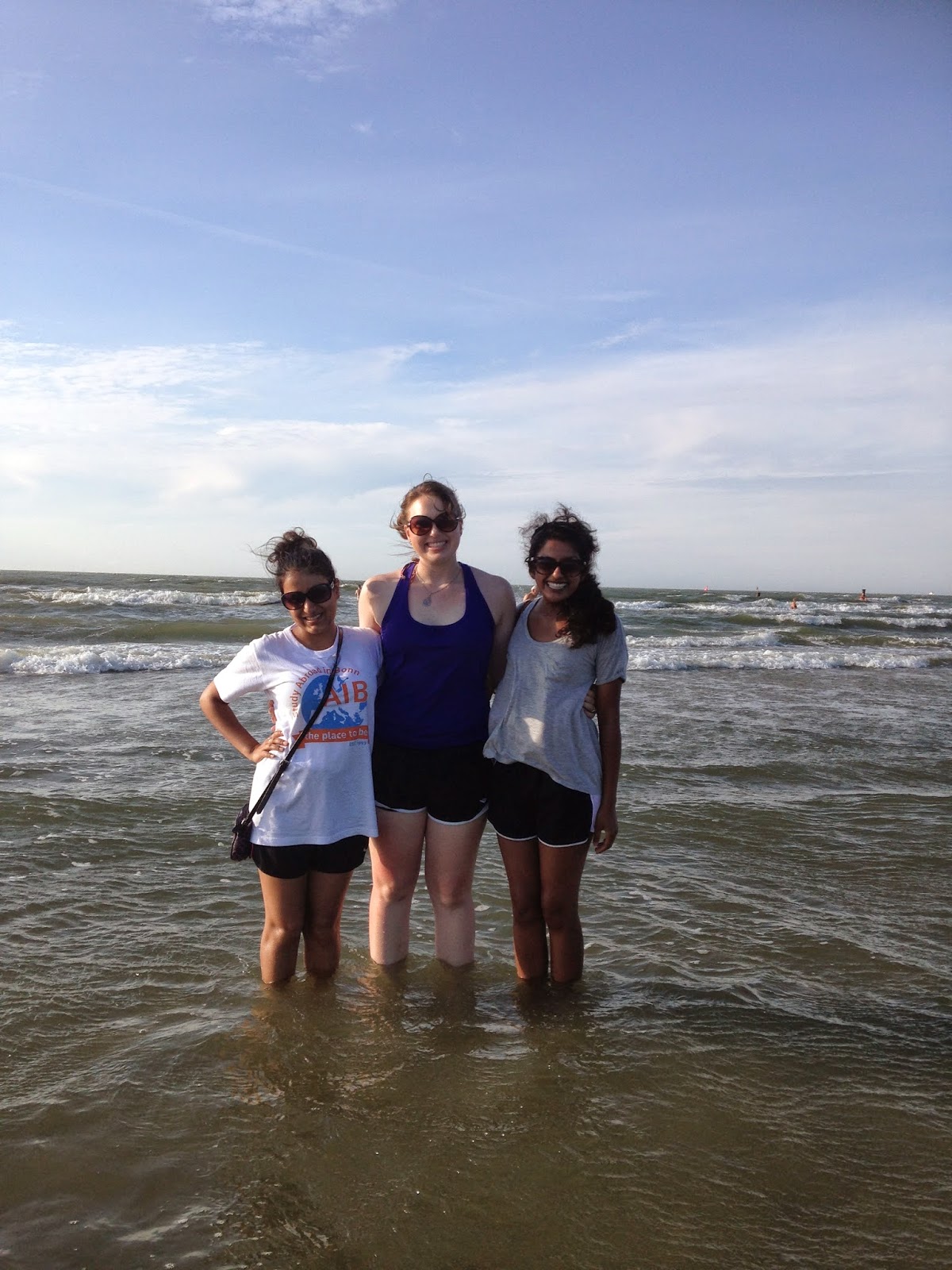These four days in Norderney have truly exemplified the importance of this trip for me. It felt like I was on a very relaxing summer vacation. We rode our bikes around Norderney, visited the beach, and for the first time, I went to a spa (bade: haus). But before I release my thoughts and sweet feelings about this island, mentioning our one day stay in Hannover is important too.
Elisa and I were stuck on the train for 14 hours during the ride back to Budapest, and so we started our day in Hannover in a rush with no time for breakfast or lunch. Our first stop was the research center on axolotls. Cuteness coupled with the ability to grow perfect sized limbs, these amphibians were simply stunning. We learned about their importance in plastic surgery and amputations, since regrowth is not something that human beings can do, but these animals can. We also saw spiders in the same research lab that are very important in discovering a better solution to burns than skin grafting. Next we visited the cardiology department of the Hannover medical school, and we were fortunate enough to meet Dr. Shmitto and his assistant surgeon. Dr. Shmitto has carried out many successful VAD surgeries throughout his life, and it was very enlightening to understand the process of installing a device that essentially carries out the function of a heart in a patient. Dr. Diaz talked about the various complications with the replacement, and also successes. In addition, we met and saw patients with the device installed, however we did not get to converse with the patients this summer. Once we were outside, Dr. Wasser talked about the patients he saw last year. Surprisingly, one of those patients chose to receive a VAD rather than having the option to get a donor heart. He believed that the device functioned very well, and that receiving a human heart would only cause a long stay at the hospital, followed by possibility of rejection.
Coming back to our stay in Norderney, the first day was the highlight of the trip with the mud flat hike. We rode our bikes to the site and took off our shoes. Then, we stepped into mud and it felt GREAT. Squishy and slimy mud. These are things that we do not do in our daily lives, so knowing that walking in such mud was okay excited me. We saw crabs and worms that lived in the mud and I also held a crab. Next, we stepped into knee deep mud, and getting out was a struggle but fun. Our free evening shortly followed, and we went to the beach. It has been years since I’ve experienced the beauty of the sea, and therefore the walk along the shore was very calming. The next day we went to the very famous bade:haus, which is basically a bathing house and spa that supports the philosophy of healing the individual. We were allowed to make use of the house after a lecture. There were multiple saunas, mud baths, pools of various kinds including hot, cold, warm, waterfalls and lastly a pool depicting the Dead Sea. I enjoyed it all, and also was fortunate enough to use the mud bath. We applied mud all over our bodies and sat in the steam for 20 mins, after which the water falls started. Later, we visited the Sea Rescue Service and learned more about the lives of the medical aid workers on the boat. The most inspiring aspect of these workers was that they were willing to help people in any condition whatsoever, even in horrible weather. In addition, they were paid by donations. It requires an abundance of good will and courage to do such a job, away from home and family for 14 days and always being on call. On our last day in Norderney Olivia, our program coordinator, took us to the beach for an hour of physical exercise. Now we are on our way to Bonn. I will truly miss Norderney and everything that we experienced here, except the fresh air tax that Olivia paid for all of us. The beach, the fresh air and the pleasant climate—all would stay in my memory for years to come.
Elisa and I were stuck on the train for 14 hours during the ride back to Budapest, and so we started our day in Hannover in a rush with no time for breakfast or lunch. Our first stop was the research center on axolotls. Cuteness coupled with the ability to grow perfect sized limbs, these amphibians were simply stunning. We learned about their importance in plastic surgery and amputations, since regrowth is not something that human beings can do, but these animals can. We also saw spiders in the same research lab that are very important in discovering a better solution to burns than skin grafting. Next we visited the cardiology department of the Hannover medical school, and we were fortunate enough to meet Dr. Shmitto and his assistant surgeon. Dr. Shmitto has carried out many successful VAD surgeries throughout his life, and it was very enlightening to understand the process of installing a device that essentially carries out the function of a heart in a patient. Dr. Diaz talked about the various complications with the replacement, and also successes. In addition, we met and saw patients with the device installed, however we did not get to converse with the patients this summer. Once we were outside, Dr. Wasser talked about the patients he saw last year. Surprisingly, one of those patients chose to receive a VAD rather than having the option to get a donor heart. He believed that the device functioned very well, and that receiving a human heart would only cause a long stay at the hospital, followed by possibility of rejection.
 |
| axolotl |

No comments:
Post a Comment